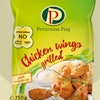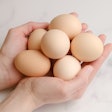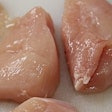
Most broiler chickens are raised in artificial light. This can not only affect their behaviour but also performance. Dark periods are usually kept to a minimum and light levels relatively subdued. However, the potential of changing photoperiods and photointensity is receiving increasing interest, both commercial and regulatory, and various approaches have been adopted.
Among presentations at the International Poultry Exhibition, held in Atlanta in late January, was a study by Dr Roger Lien, associate professor with Auburn University's Department of Poultry Science, comparing the effects of the US and proposed European Union (EU) lighting programmes on broiler live and processing performance.
The work, carried out with Dr Joe Hess, associate professor and extension scientist, builds on light studies carried out at Auburn over the last seven or eight years and compares one programme meeting the US' National Chicken Council (NCC) guidelines and two programmes meeting proposed EU guidelines.
Various approaches
The NCC's broiler guidelines state that birds should have at least four hours of darkness, less during the first and last two weeks. The guidelines have no intensity requirements. However, when continuous or near-continuous light is used, the NCC suggests that it should be subdued.
The EU's broiler guidelines have been revised since the start of the decade. In 2005, at least eight hours of darkness was proposed and one period of four hours, with a lower requirement during the first and last three days. In 2007, this was revised to require at least six hours of darkness and one period of four hours, less during the first seven and last three days, with an intensity of at least 2 FT.
For the Auburn study, 80 male broilers were placed in each of 12.3m by 3.7m light controlled rooms. Four of these rooms were provided with NCC-recommended photoperiods and dim intensity (20D treatment). Four rooms were provided with an EU intensity and photoperiods, with a split dark period (14B treatment) and four were provided with an EU intensity and a single dark period (16B).
Twenty birds per room were processed at 47 days. The body weights of birds from the 14B and 20D treatments were greater than those from birds given treatment 16B, but otherwise body weight was unaffected. Similarly, at 47 days, feed consumption was greater in the 14B treatment group than in the 16B while 20D was indeterminate. Treatment appeared to have no effect on feed conversion.
Varying results
Uniformity at 22 days did not differ between treatments. However, at 47 days, it was greater in the 20D treatment than in the 16B group while 14B was indeterminate. Overall mortality did not differ between treatments. However, mortality to 22 days was greater in the 20D treatment than in 16B while 14B was intermediate. Carcass, total breast, fillet, tender and high weights and yields did not differ between treatments.
However, drumstick yield was greater in the 16B treatment group than in the 14B group, while 20D was indeterminate. Wing yield was greater in the 20D and 16B treatments than in the 14B. However, drumstick and wing weights were unaffected by treatments.
The results of the trials indicate that splitting an eight-hour daily dark period into two four-hour blocks improves live performance relative to a single eight-hour dark period, and that although the yield of minor parts was reduced by splitting the dark period, breast yields were unaffected.
With more hours of light, there is greater uniformity and greater intensity results in greater yield. Dr Lien notes that, with the European approach, and its requirement for more hours of darkness, there could be a negative impact on carcass yield. However, the European brighter intensity requirement would appear to ameliorate this.
However, the research is ongoing and Dr Lien commented: "In this work, photoperiod and intensity differences balanced each other out; however, in recent trials, we have seen photoperiods and intensities impact breast meat yield to as great an extent as broiler strains."
Lighting impact
While broilers need light to feed and develop, light levels are also known to influence activities such as feather pecking and other undesirable behaviours.
Beyond its work on performance, the Auburn team is also looking at the impact on welfare of various lighting regimes.
The EU's broiler welfare directive, which lays down lighting requirements and comes into force in the middle of next year, is likely to have some influence outside Europe's borders.
Producers beyond Europe may have to pay greater regard to this aspect of lighting programmes and find ways to minimise the impact that any reduction in light hours may have on performance. Decreasing hours of light can reduce body weight growth and feed consumption, yet there is a push towards reducing the hours of light given to birds.
Spitting the dark period may be one way of reducing its impact.



















